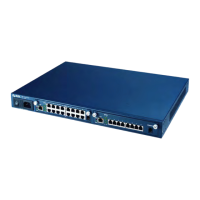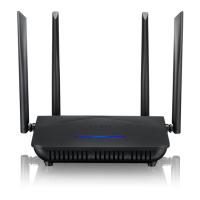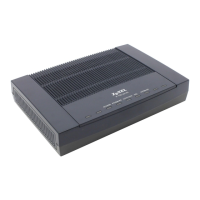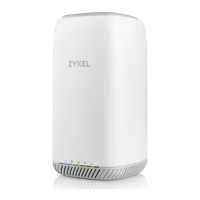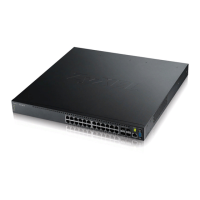IES-2000/3000 User’s Guide
Switch-Related Commands 28-5
Bits of interest are described as follows. Four binary bits (a nibble) make up each hex digit
1
. The leftmost bit in
the first nibble denotes if the link is down or up.
0 means the link is up, 1 means the link is down.
Hex 1 0 0 3
Binary Equivalent Nibbles 0001 0000 0000 0111
The rightmost bit-pair in the last nibble show rate and duplex mode as described in the next table.
Table 28-3 Port Status Command
LAST HEX DIGIT RIGHTMOST NIBBLE BIT-PAIR RATE DUPLEX MODE
0 00 10Mbps Half Duplex
1 01 10Mbps Full Duplex
2 10 100Mbps Half Duplex
3 11 100Mbps Full Duplex
28.4 VLANs
28.4.1 VLANs
A VLAN (Virtual Local Area Network) allows a physical network to be partitioned into multiple logical
networks. Stations on a logical network belong to one group. A station can belong to more than one group. With
VLAN, a station cannot directly talk to or hear from stations that are not in the same group(s); the traffic must first
go through a router.
In MTU applications, VLAN is vital in providing isolation and security among the subscribers. When properly
configured, VLAN prevents one subscriber from accessing the network resources of another on the same LAN,
thus a user will not see the printers and hard disks of another user in the same building.
VLANs also increase network performance by limiting broadcasts to a smaller and more manageable logical
broadcast domain. In traditional switched environments, all broadcast packets go to each and every individual
port. With VLAN, broadcasts are confined to the members of the VLAN. Note that VLANs are unidirectional -
they only govern outgoing traffic.
Port-based VLANS
Port-based VLANs are VLANs where the packet forwarding decision is based on the destination MAC address
and its associated port.
As previously mentioned, VLANs are unidirectional. Therefore, if you wish to allow two subscriber ports to talk
to each other, for example, between conference rooms in a hotel, you must define the egress (an egress port is an
outgoing port, that is, a port through which a data packet leaves) for both ports.
1
0x2 = 0x0002
Link is up.
100Mbps,
Full Duplex

